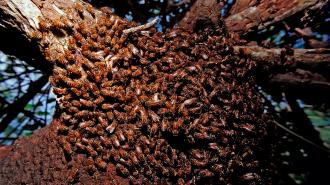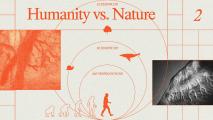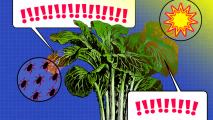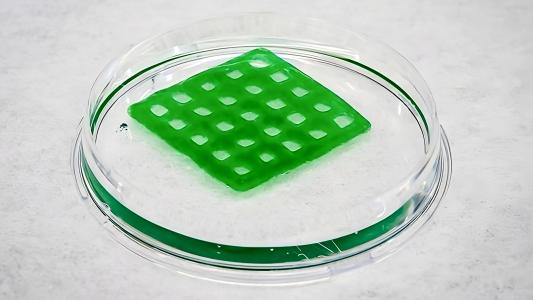When ecologist Rachael Winfree first began studying bees 25 years ago, she happened upon a surprise: a species of plasterer bee in the New Jersey Pine Barrens, not seen in 50 years and suspected to have gone extinct. But when she called state wildlife officials to report the discovery, she was told they weren’t interested — they didn’t have the resources to monitor bees and other insects.
This is a familiar scenario to scientists who study native bees. These insects are facing multiple threats, and though official monitoring has improved, their declines have not been well documented. At the same time, a growing body of research is revealing just how crucial native bees are as pollinators for many plants. “They both pollinate our natural systems and — what people don’t realize — they are also really important for many of our agricultural crops,” says Scott Black, executive director of the Xerces Society, a nonprofit focused on invertebrate conservation.
Domestic honeybees are pretty much synonymous with pollination in the public’s mind, particularly when it comes to crops, and the plight of wild bees has largely been overshadowed by concern about threats to the domestic variety. Many people don’t know the difference between wild and domestic bees, further obscuring both the troubles faced by many wild species and their value, says Hollis Woodard, an entomologist at the University of California, Riverside.
While individual domestic honeybee colonies are vulnerable to collapse due to a combination of poor nutrition, pesticides and pathogens, the insects are not at risk of dying out. “We manage honeybees all across the world,” Black says. “There are more honeybees on the planet now, we think, than ever in the past.”
For some wild bees, however, the threats may be existential. And this isn’t bad news just for the bees. Researchers argue that relying solely on honeybees for pollination is a risky strategy akin to a poor retirement strategy of buying stocks in only one company. And studies have shown that native bees are in many cases essential to flourishing ecosystems and farms, even where honeybees are abundant.
Growing awareness of the issue is prompting both scientists and policymakers to pay greater attention to declines among these indispensable insects. And new findings point to how farmers and land managers can better support a diverse and booming bee community.
Benefits of bees
Unlike hive-forming honeybees, most wild species are solitary (bumblebees, which form colonies, are one well-known exception), nesting in cavities in rocks and wood or on the ground in leaves and woody debris. There are about 20,000 wild bee species globally and 3,600 in the United States and Canada.
More than 80 percent of flowering plants depend on insect pollinators to reproduce. When pollinators visit flowers — which act as the plants’ reproductive organs — to eat their nutritious pollen and nectar, the insects inadvertently transport the pollen between plants, which fertilizes the blooms, leading to fruit and seed formation. “If you want resilient meadows in Colorado’s mountains, if you want beautiful tall grass prairie in the east, or flowering ecosystems in California, you can thank a native bee,” Black says.
In agricultural fields around the world, native bees help to pollinate the three-quarters of crop species that rely on pollinators, which amounts to one-third of global crop production by volume. (Many staples like wheat and corn are wind-pollinated.) In a 2013 study covering 27 types of crops — such as almonds, coffee and blueberries — across 600 fields around the world, researchers found that wild insects increased the rate at which flowers turn to fruit. Fields with fewer wild pollinators had less fruit, leading the authors to conclude that honeybee pollination alone may not be able to sustain maximum yields on farms.
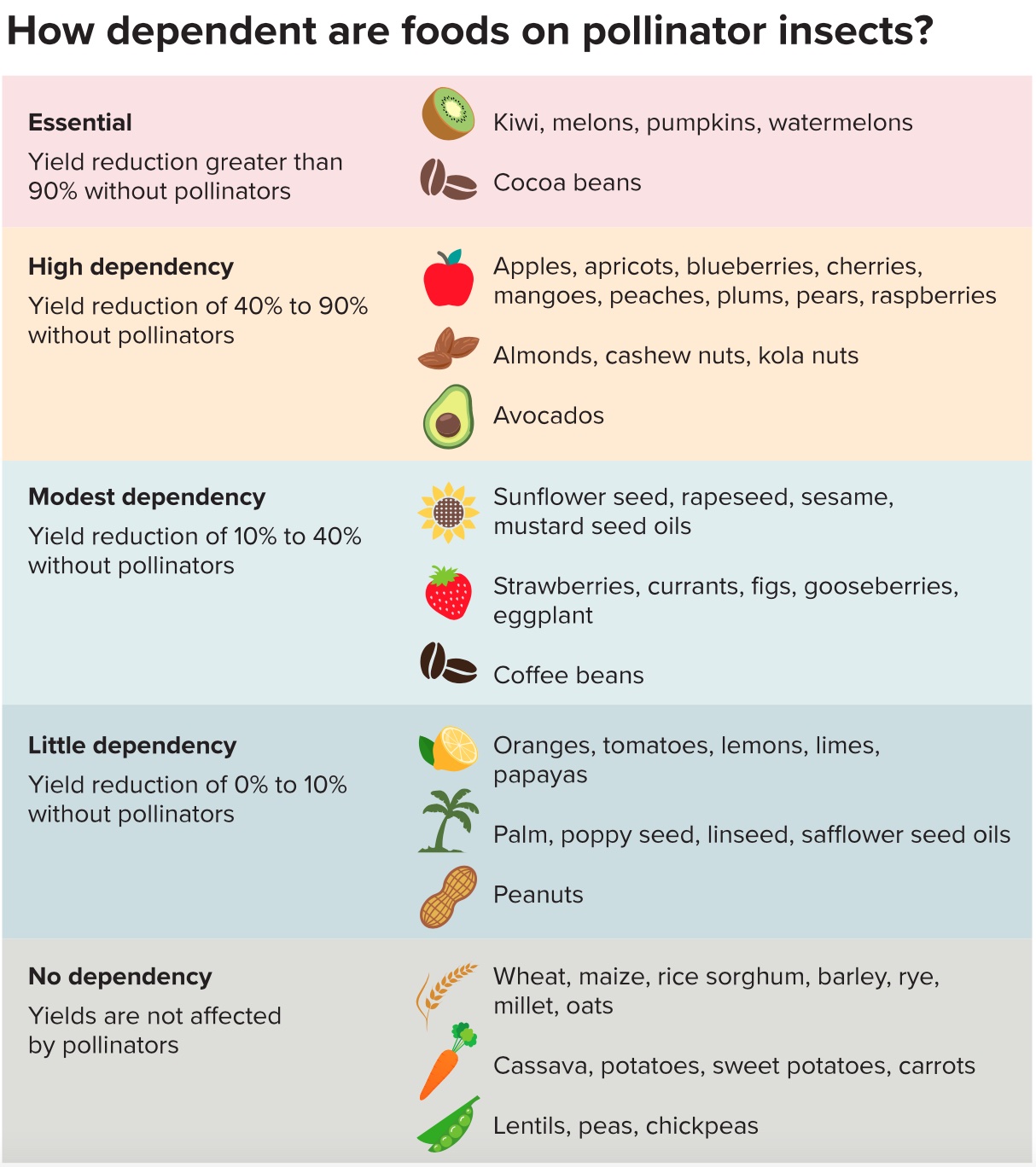
Recent work has also highlighted the huge economic impact of wild bees. Research published in 2020 found that for seven crops, including apples and pumpkins, wild bees were responsible for over $1.5 billion in annual production. Wild and managed bees have similar contributions to the value of produce sold, according to a 2015 analysis of 20 crops across almost 1,400 fields.
For some crops, wild bees are more effective pollinators than honeybees. For example, in tomatoes, blueberries and cranberries, bumblebees are paramount. These crops’ flowers need to be shaken with a precise frequency to release pollen. “That frequency is provided by the bees’ buzz,” says entomologist Sydney Cameron of the University of Illinois Urbana-Champaign, coauthor of a 2020 overview of trends in bumblebee health in the Annual Review of Entomology. The fuzzy insects land on flowers and isolate their flight muscles from their wings, allowing the muscles to vibrate their thorax as their wings stay still, making them by far the most effective pollinators for these plants.
Even uncommon pollinators can play a surprisingly critical role. In a 2022 study of 72 wildflower and agricultural sites in New Jersey and Pennsylvania, rare and declining bee species provided up to 86 percent of pollination at some locations. Rare pollinators serve as insurance, filling in when common species are absent, says Winfree, now a pollination ecologist at Rutgers University and coauthor of the research. “In some places or some times, you may not have that dominant bumblebee or that honeybee,” Winfree says. “You may need these other species.” For example, when high winds in California almond orchards drove honeybees to stay in their hives, wild bees continued to visit the trees.
But all of the benefits provided by native bees may be at risk, says Claire Kremen, a conservation biologist at the University of British Columbia. In an assessment of nearly half of all bumblebee species, scientists estimated that a third of those studied were in decline. The number of bee species documented in a yearly survey from 2006 to 2015 had dropped by a fourth compared to similar tallies before 1990. Some crops — including apples, blueberries and cherries in the US — are already being affected by the declines, producing less fruit than they would be expected to with more pollinators.
Stemming the losses
The causes of decline in native bees are numerous. Habitat loss, disease and pesticides are among the top issues, with climate change and invasive plant growth also adding pressure, Black says. Managed honeybees and bumblebees can also cause problems for wild species by spreading disease and competing for food.
But this doesn’t necessarily mean we should quit using managed bees, Kremen says. She advises actions that support all pollinators. “We’ve also found in specific crop studies that the combination of honeybees and wild bees can be more effective,” she says. “In general, it’s a good strategy to have both.”
In large fields concentrated with one fruit or vegetable, natural habitat tends to be minimal, and pesticide use maximal, leaving less food for insects while degrading their health. This is particularly hard on wild bees, which don’t fare as well without a range of different plants to forage on. Domestic honeybees can persist in these monocultures because beekeepers supplement their diets with sugar water and transport them between crops. Interventions such as including a variety of flowering plants can help all pollinators.
Even small changes can boost native bees and facilitate greater pollination. In a February 2023 study funded by the Xerces Society, researchers estimated that farms in California’s Central Valley could add more than 1 million acres of pollinator habitat by planting lines of native plants along the edges of fields and in drainage ditches. In other research, better nutrition provided by planting wildflowers between fields has shown promise in helping some bees weather the effects of pesticide exposure.
Public land management can also impact bees, says ecologist Will Glenny of the Helmholtz Center for Environmental Research and the German Center for Integrative Biodiversity Research in Leipzig, Germany. Dense herds of cattle can graze away food for native bees. Meanwhile, fire and even logging can stimulate a pulse of flowering plants that support insect pollinators. Understanding these complex interactions can help land managers to better support diverse bees and the services they provide in nature, Glenny says.
Researchers also stress the need to monitor native bees. Scientists lack data on species abundance, especially for solitary bees, which can be hard to find because they nest in places like leaf piles and can have small ranges. Woodard leads the National Native Bee Monitoring Network with the hope of fixing that by gathering and standardizing data on native bees across the US.
The data could show which bees are doing well. “Truly, I think there are going to be some bees that are doing just fine,” Woodard says. “And it would be really inspiring and hopeful for people to see that.”
Better data will also reveal which bees are declining. This information could help support endangered species listings and highlight the need for regulations on stressors like pesticides, Woodard adds. Some legal and regulatory changes benefiting bees are already underway. In 2022, California courts ruled that insects are eligible for listing under the state’s endangered species act, which could lead to greater protections for at-risk bees including four bumblebee species. The $1.2 trillion Infrastructure Investment and Jobs Act passed in 2022 includes funding for planting pollinator habitat along roadways. And the Xerces Society is working with the US Department of Agriculture to help farmers provide pollinator habitat.
While legislative changes will be fundamental to revamping our relationship with insect pollinators, anyone with a yard, or even just a balcony, can give native bees a boost. After moving into a new home, Black ripped out most of the existing landscaping and replaced it with pollinator-friendly plants, and within a couple of years it was “swarming with native bees and butterflies,” he says. The Xerces Society has compiled lists of pollinator-attracting plants for various regions.
Compared to less tangible acts like donating money to conservation, “when you can actually get your hands dirty, and see the change, see these animals show up in your yard — I think it’s really meaningful.”
This article originally appeared in Knowable Magazine, a nonprofit publication dedicated to making scientific knowledge accessible to all. Sign up for Knowable Magazine’s newsletter.

